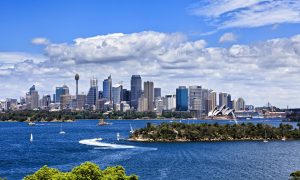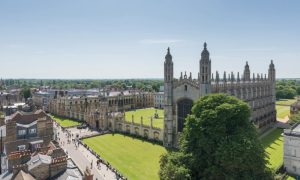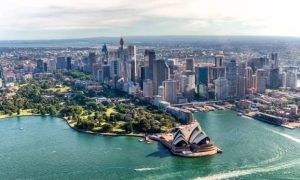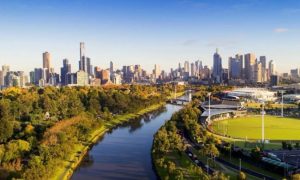Australia is known for its high quality education system, attracting a large number of people who want to provide their children with a good education.immigrantsFamilies. From kindergarten to university, Australia's education system not only provides comprehensive knowledge and skills development, but also focuses on students' creativity and global perspective. In this article, you'll learn more aboutMigration of children from AustraliaThe education system, from kindergarten through college, helps immigrant families learn about this educationally rich country.
I. Kindergarten (Early Childhood Education)
Educational profile:
Australia places a strong emphasis on pre-school education, and the Government provides many forms of kindergarten services, including long day care, family day care and pre-schools. Pre-school education is provided for children aged 3 to 5 years to help them develop social, language and cognitive skills before they formally enter elementary school.
Features:
- Flexible teaching hours: Parents can choose between a full-time or half-time program depending on their work schedule.
- Combining games and learning: Learning content unfolds through interactive and playful formats that stimulate children's curiosity and interest in learning.
- Government subsidies: Families can apply for Child Care Subsidy to reduce their financial burden.
Recommendation:
Immigrant families should enroll their children in preschool services as early as possible, as kindergarten places in popular areas may be tight.
II. Primary School Education (PSE)
Educational profile:
Primary education in Australia begins at age 6 and usually lasts until age 12, providing students with a basic education in reading, writing, math, science and the arts.
Features:
- Free public schools: Most students attend government-funded public schools with low tuition fees.
- Individualized Instruction: Teachers adapt their teaching methods to students' interests and abilities to ensure that each student develops to the fullest.
- Multicultural integration: The school focuses on fostering cultural inclusiveness and a sense of social responsibility in its students, helping children of immigrants to better integrate into their environment.
Private Schools:
Immigrant families may also opt for fee-based private schools, which often offer richer curriculum choices and smaller class sizes.
III. Secondary School Education (SSE)
Educational profile:
Secondary education covers grades 7 to 12 and is divided into middle school (grades 7-10) and high school (grades 11-12). Students are required to complete high school and then sit for a unified state examination to obtain a high school diploma (e.g. VCE, HSC, etc.).
Features:
- Enrichment Program: In addition to the core curriculum, middle school students can explore interests by choosing electives in art, technology, and business.
- Career Orientation: The high school offers a Vocational Education and Training (VET) program that lays the foundation for future careers.
- Global Recognition: Australia's high school diplomas are recognized by universities around the world, setting the stage for further study.
International student support:
Many schools offer specialized language support courses to help children of immigrants overcome language barriers.
IV. Higher Education (Tertiary Education)
Educational profile:
Australia has leading universities and vocational colleges, and its tertiary education system is known for its flexibility and internationalization. University programs cover a wide range of fields, including arts, science, engineering and medicine.

University education:
- Top Global Ranking: Australia has several universities ranked in the top 100 in the world, such as the Australian National University, the University of Melbourne and the University of Sydney.
- Flexible schooling: Students can choose a multi-disciplinary joint program (Double Degree) based on their interests to increase their career competitiveness.
- Integration of research and practice: Colleges and universities emphasize the integration of theory and practice, and provide students with a wealth of internship and research opportunities.
Vocational education (TAFE):
The Institute of Technical and Further Education (TAFE) provides students with practical vocational skills training programs in areas such as engineering, nursing, and information technology.
V. Educational expenses and financial assistance
Public Education:
- Public schools at the primary and secondary levels are free of charge for local residents, with only a small school fee.
- Immigrant families may be required to pay international student tuition until they obtain permanent resident status.
Private education:
Tuition fees at private schools are higher, ranging from about A$10,000 to A$40,000 per year, depending on the type of school and location.

Higher education:
University tuition fees range from about A$20,000 to A$50,000 per year, depending on the course. Migrant families can apply for the Government Loan Program (HELP) to reduce their financial burden.
Scholarships:
Many universities in Australia offer scholarships to deserving students to cover part or all of their tuition fees.
VI. Educational planning recommendations for migrant families
- Learn about school resources in advance: Before immigrating, you can find out the distribution and ranking of local schools through the education department in your area.
- Focus on language support: Choose a school that offers an intensive English language program for children who are new to Australia.
- Planning directions for higher education: Choose the right college or vocational education institute based on your child's interests and career goals.
- Make full use of subsidies and scholarships: Immigrant families can mitigate the cost of education through government support programs and school scholarships.
VII. Summary
Australia's education system offers migrant families a diversity of choices and a wide range of developmental opportunities. From kindergarten to university, children can enjoy comprehensive educational resources, international perspectives and individualized development opportunities. Whether you're an academically focused family or a parent looking to develop practical skills, you'll find the right education pathway in Australia.
For families who are planning to immigrate, knowing in advance and planning reasonably for educational resources will lay a solid foundation for the children's future, as well as for the whole family.Immigration to AustraliaLife brings more convenience and confidence.






